
The skincare industry is an incredibly attractive industry to enter. It is a space that is ready for transformation, progression, and self-care while rising amongst human entrepreneurship and opportunity. Many individuals are passionate about the beauty sector, enjoy creating products that make a difference in our lives and want to establish their own skincare brand. Pursuing this endeavor can be exciting but would require you to build a business in a rapidly evolving industry full of competition. It's not enough to simply have a good product, the work involved in planning, developing, executing, and understanding the many layers of your journey from ideation to getting a product into the hands of a customer is complex.
This guide intends to unfold that journey while providing you with a solid foundation as you start your skincare entrepreneurship. It will explore the stages of ideating your vision, researching your market, developing products, defining your brand, sourcing manufacturers, marketing your line, and having a plan for growth to take your opportunity to an actual brand.
Prior to Getting Started:
Preparing to Build Your Skincare Empire
Before you begin the specific steps of formulating a product or creating a logo, a period of thought and assessment is required. Something else that you need to plan for is a ton of work upfront.This step is to make sure starting a skincare line is not rooted in misplaced ideas or motivations and that it will be based off a solid understanding of your personal landscape and the market landscape.
Is Starting a Skincare Line Right for You? (The Reality of An Entrepreneur)
Being an entrepreneur and doing something in the beauty industry is often romanticized. We usually find ourselves relating to the image/takeaway of successful women, and feel as though we also have an ability to be part of the creative process. Despite our passion, we must understand that there is a lot to navigate. While you need the creative forces, you will be creating your own career path. Do the work to have an open and honest self-reflection. Starting a business is a huge undertaking that typically involves a lot of time and commitment to developing your idea, no matter the industry.
When establishing your startup, you, the founder, will be expected to wear many roles; specifically as product developer, marketer, sales person, customer service person, and so on. Even when you are passionate about launching your business and product, you are going to face challenges along the way, and self-doubt can be a consistent roadblock during the journey. In order to overcome those hurdles, it takes determination, and more often than not, it takes a sense of purpose - a love for your mission that provides you the motivation to rise each day.

In addition to the personal commitment, there are financial implications to consider wisely. For instance, one can develop a product line in an industry such as skincare which requires initial and ongoing startup costs, therefore you will have to make decisions related to everything from product formulation and sourcing of ingredients, measuring costs for packaging and packaging design, setting aside money for legal fees, and applicable forms of marketing - general and startup marketing. It is important to be honest about the potential investment and costly implications, and develop a responsible budget from the start.
Expecting to find no limitations in finding required initial and ongoing expenses could sabotage the opportunity for any start-up brand to thrive in a commercial world. This early on reality check is not meant to throw you off-path, it is to help ensure that aspiring founders enter entrepreneurship prepared with time and effort to succeed and put in the expected contribution of the kind of work you will soon be wanting to perform in business. All of the founders who recognize the possibilities of those challenges, overcome them and remain determined to pursue their ambitions, will have a competitive advantage over the many aspirants who are daydreaming about the prospects of their ideas!
Knowing The Skincare Landscape: Primary Market Intelligence
Once the personal commitment takes place (you are probably wondering if wearing that many hats ever stops?!), the next step is to take an analytical approach to examine the market itself and obtain a proper understanding of where things stand in the skincare landscape. This entails taking a “deeper dive into market research” examining current trends and looking for what is causing excitement in the skincare category. Are more products geared towards “clean beauty”? Is there an increasing focus on men’s skincare? Are there specific ingredients with a growing interest? There are many ways to assess this from using sources such as Google Trends, trade newsletters, and actively monitoring social media discussions, to discover what information is being sought and what consumers are talking about.
Of course, useful market research goes well beyond just identifying what trends are hot. It is also important to identify unmet needs, and identify market gaps. For example, are there unmet and unserved skincare needs due to extreme climatic conditions? For specific underserved and/or declining demographics, such as teenagers or the elderly, whose needs are not enough to be considered by existing offerings? Identifying these gaps means the new brand is more likely to capture a dedicated market share rather than entering an already filled market. This first look at the market is not just about seeing what works, but finding a potential entry point; a new brand that has something different or better to offer, which is a concept that is useful when focusing in on the brands niche.

Defining Your ‘Why’: Passion, Purpose and Long Range Vision
Defining Your ‘Why’: Passion, Purpose and Long Range VisionWith a realistic big picture of the demands of any entrepreneurial endeavour and an understanding of the initial market, it's time to define the core motivation for wanting to launch a skincare brand. This “why” needs to go far deeper than the simple view of wanting to earn a living, where is the deeper purpose? What is the brand’s values? What is the goal of making an impact on the lives of customers or within the industry? As noted, passion can be helpful for overcoming the difficulty of starting any new business.
This internal motivation this clearly defined purpose becomes solid ground during both the good times and the tough times. It provides the basis for the brand story, it connects with a consumer base that increasingly want to but decide not to support the latest trendy item, and it gives the founder the perseverance to keep going. In a market so full of competition, brands that articulate their “why” and connect with their customers on an emotional level tend to develop a stronger, loyal following than brands solely focused on the benefits of their products. This foundational “why” will inform the critical decisions that will follow, including the new brands image, branding, messaging, marketing communication strategies, product formulation; ensuring they are all consistent and authentic; which are key ingredients for building long term brand equity and customer loyalty.
Step 1: Finding Your Niche & IdentifyingYour Dream Customer
Finding a niche and understanding your dream customer, have been presented as the essential components of success in a crowded and competitive skincare space. By commencing with a niche-focused brand, new brands can slice through the background noise, breaking into the market and communicating meaningfully with their audience.
Niche: The Value of Specialization in a Complicated Market
In the large, and often crowded beauty/skincare market one of the major failures of new brands is trying to be all things to all people. This causes major dilution of effort and makes it challenging to stand out. A niche is not about limiting your potential, it is about focusing your resources and messaging on a smaller audience that resonates with your brand. A niche is about outlining what sets the skincare brand apart from the others; in fact, "selecting a niche and narrowing focus is the best way to win." This focused approach allows the brand to "claim a smaller more dedicated segment" of the market.
An established niche has many strategic benefits. A new brand can be a "big fish in a small pond," creating more powerful initial impact; for example, it may allow the brand to charge premium prices, because of the specialized solutions and expertise. By this approach the brand is creating a sense of community and loyalty; customers feel you understand their specific needs and the brand is catering to them. It is a strategic form of competitive advantage that allows a "new player" to create a version of a defensible market position against larger companies.

Researching Your Target Audience (More than Basic Demographics)
After identifying a niche you want to work in, the next important step will be to develop a detailed understanding of the ideal customer in that niche. In fact, when developing a buyer persona, you will want to think well beyond demographics. Demographic information such as age, income level, and gender are definitely factors to consider, but creating an effective persona will go well beyond sorely measuring the demographic make-up of your target audience, and really delve into psychographics. This is getting in the nitty-gritty of exactly what skincare they need and are looking to solve, skin types, what products they currently use, their lifestyle, their values and what problems/pain points are they looking to overcome with skincare. What do they really want with their skincare products?
There are several ways that this type of data can be obtained. You can conduct a survey on social media, you can look online to see if there are current trends or discussions about a specific skin issue that maybe you're considering developing products for, and even putting together a focus group or product prototype testing group of potential customers. While your goal is to develop a very clear picture of "who you are creating products for"" (skin issues, general amount spent on skincare, and even lifestyle habits), getting a deep understanding of your target audience's problems and desires, is more important than just their demographic skin profile because it will inform you to develop products that provide real solutions and also marketing message that resonates with them and creates a much more meaningful connection.

Competitor Analysis: What Can We Learn Again, From The Good, The Bad, And The Gaps?
Once the niche is identified, and the target audience is established, the focus shifts to the competitors in that space. A competitor analysis is not an exercise in imitation; it is a strategic analysis meant to learn about the good things others are doing, their weaknesses, and theoretically, find the gaps in the market that the new brand could fill. Researching existing brands which are competitors, especially if they are targeting a similar audience, or a more similar product space, in order to "find gaps and differentiation opportunities."
Competitor analysis should look at the competitors product strategy. What are they doing well? Are there customer needs in the niche that none of the brands, specifically, have identified? Are they filling them? The "gaps" at this stage, could be not so much an absent product type in the market, as missing factors like customer service, ingredient transparency, sustainability practices, or community involvement, for example. By taking a holistic examination of the competitors entire brand ecosystem, there is opportunity for strategic differentiation, and not just a product differentiation in the incremental way to create advantage or improvement in the product by only better thinking.

Developing Your Unique Selling Proposition: What makes YOU irresistible?
The exhaustive work of identifying a niche, deeply understanding the audience, and insightful competitive analysis sets the stage for the creation of a succinct and persuasive Unique Selling Proposition (USP). The USP is a message, a core branding message that signifies why an audience (customer) chooses to buy this skincare from all other brands. The USP answers the question: "What makes THIS brand special and irresistible to the target audience?"
Any number of USPs can exist, including, but not limited to, "eco-friendly and vegan product" or, "luxury skincare with over the top ingredients". Other USPs may be around a very specific rare or extremely effective ingredient, a unique formulation technology, a unique customer service model to a specific demographic, or a brand story that connects to the target audiences values in a more impactful way. A truly great USP will incorporate more than the product, it is a promise. A promise that resonates with the deepest needs, desires, and values of the target audience discovered during the audience research. The connection that makes the difference, that substitutes a tangible product difference, to an intangible emotional or value-based driver, that allows the brand to create a strong memorable identity, that resonates and connects with the intended customer.

Step 2: Create Your Signature Skin Care Products
Once you've defined a niche and studied the target customer, we begin to shift gears to the physical 'heart' of your brand - its products. The next step is to take the vision of your brand and the needs of your audience and create a line of skincare products.
What products will you create? (Start narrow, then expand)
Starting a new skincare brand, many are tempted to simply release a wide range of products to cover every conceivable need. However, it is wiser, and often more successful, from the standpoint of not losing focus and following a well-thought-out strategy that says "limit options initially to perfect the product before we expand." The product line should be intentionally developed with a very focused selection of products that cover the most important needs and wants of the targeted audience. There is a vast range for skincare products from broad category products like cleansers and serums, to more targeted solutions like anti-aging products or treatment for acne . In the beginning, the range of products offered is less important than focusing on quality and effectiveness.
The product line should be made up of complementary products that stand alone, so there is no cannibalism of sales, yet each product needs to "clearly focus on one need at a time". Launching with a "hero" product - a product that is the perfect expression of the promise of the brand, or a small range of effective products helps to simplify marketing strategy, inventory, and hugely improve the chances of quickly establishing a strong reputation for excellence in one area. [targeted] is also a reasonable risk management strategy by developing strong expertise and thereby consumer trust about a singular solution, and then a pathway to launch other product lines off the back of the successful launch of the '0' phase.

Formulation Philosophy: How to match ingredients to brand values
A further consideration in addition to what you are going to sell, is how are you going to formulate those products as a brand? A clear formulation philosophy is central to your brand identity and a critical way to build trust with increasingly discerning and educated consumers today.
The formulation philosophy will, in a generic sense, identify what types (and not types) of ingredients, but should also align with the brand USP, values and target consumers. Possible flavours of formulation philosophies include an explicit commitment to natural or organic ingredients, formulations that are clinically proven or Science backed, vegan+ cruelty free = 0 animal testing, or ethically sourced key ingredient inserts.While it may not feel as defined sub-headings in each guide, it is connected to some niche aspects like eco-friendly and vegan products that immediately create some formulation boundaries. Consumers are now savvy on ingredients, and unbelievably astute at pulling apart if a brand's claims are consistent in their formulations. Using the term 'formulation philosophy' can sometimes confuse certain ingredients used in the product, but it covers a variety of points on the ingredient context.
For example, formulation quality philosophy is not just a technical aspect to the lab - there is a clear value to adding it to brand promise and credibility expectancies.As you have put in place like and affirmations with it - a good ingredient selection and respect of a product's brand invocation, and also the organic compositions in terms of the consumer risk need - there is a real risk of inversely affecting consumer trust and connection to a brand.
Quality Ingredients & Their Value
Efficacy of any skincare product is dependent on ingredient quality. Sourcing quality and safe and efficacious raw materials is a commitment from product developers. Sourcing quality raw materials includes not just experiencing and validating trustworthy sourcing avenues but also a process of sourcing acceptable and alternative suppliers, and endorsing from start to finish the understanding of value to perform the intended target condition or need.
This understanding is essential in providing scientific support of communication and advertisement claims expected in successfully commercial products - such as FDA regulations on the cosmetic formulations that use the ingredients during the claiming process. Manufacturers also call and include all the raw material sourcing as part of their quality control.
Selected ingredients will be considered to shape the quality of your product - and also be implicated in customer satisfaction, re-patronisation - an extremely large social determinant of success in the medium to long term, especially when "consumers are more likely to become repeating, loyal customers after using high-quality products and developed by a quality manufacturer".
In addition to efficacy, sourcing raw materials is impacted by the prices of the raw materials, ability to rely on suppliers, ethical inquiries for sustainable harvesting of raw materials questions, and that a brand's operational bureaucracy, which shape their efficacy to govern an ethos consumer sustainability - and in turn those values.Therefore - ingredient strategy, if you follow the ingredient components, is about maintaining the balance of product goals, operations, and ethics, that succeed together - which is the essence, moreover, of the value a brand can offer, like value?
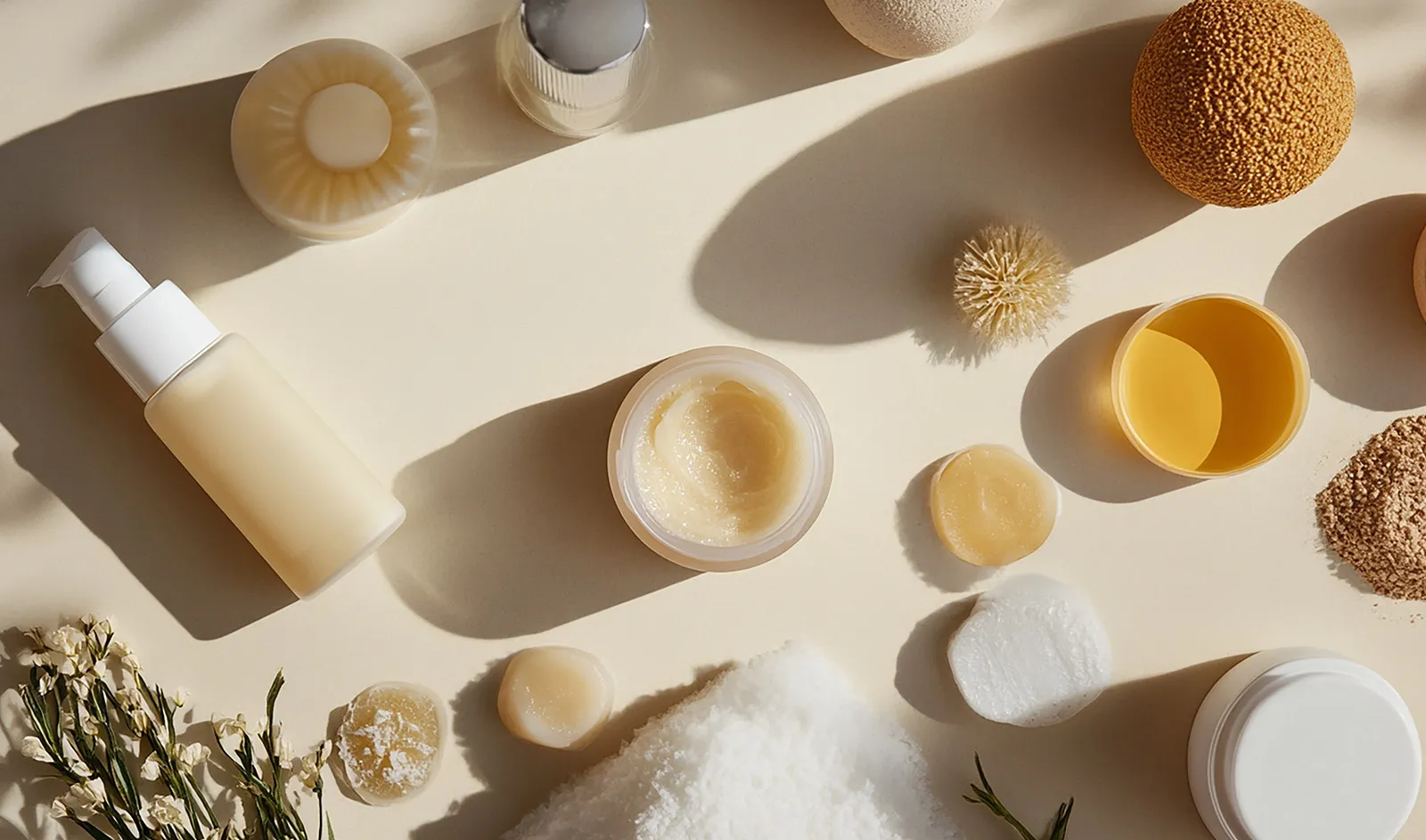
The Necessary Value of Samples, Testing and Receiving Feedback
In addition to product testing makes sample products available to a potential customer and economically viable partners for valuable and possible feedback, it affords product testing in your lab, before utilizing mass production, and in-business samples, to achieve marketing awareness before introducing it to your market - as receiving and using feedback on performance and use of products is valuable in reducing risk and validating performance potential promises.
On the other hand, quantitatively selling products in a pre-sales stage soft launch market entry can also build evidence (proof of concept appeal) for a more broad scale release of product (as explained previously in this succeeding document).At the end of the day - this means you can going evaluation testing stage to evaluate your feedback and performance, and accept adjustments and improvements before also making a second investment of product manufacturing for sale and marketing, without needing to commit in full to product development.
It will be tested and evaluated against its actual use in an actual customer's - evaluations of the brand's performance against the every day usefulness of the product - which may also represent a series of cost errors and market errors in what could have been made and recieved successful product attributes that otherwise may have been seen through a negative consumer review in public, negative, or more found launch success. It can also tell the product is achieving what it intended to provide the customer expectations based on the inquiries and analysis findings in the audiences set piece of research.This is analogous to a lean startup as they envisage experimentation and validated learnings while a, prototype it uses reasonably close, and before entering product scale-up.
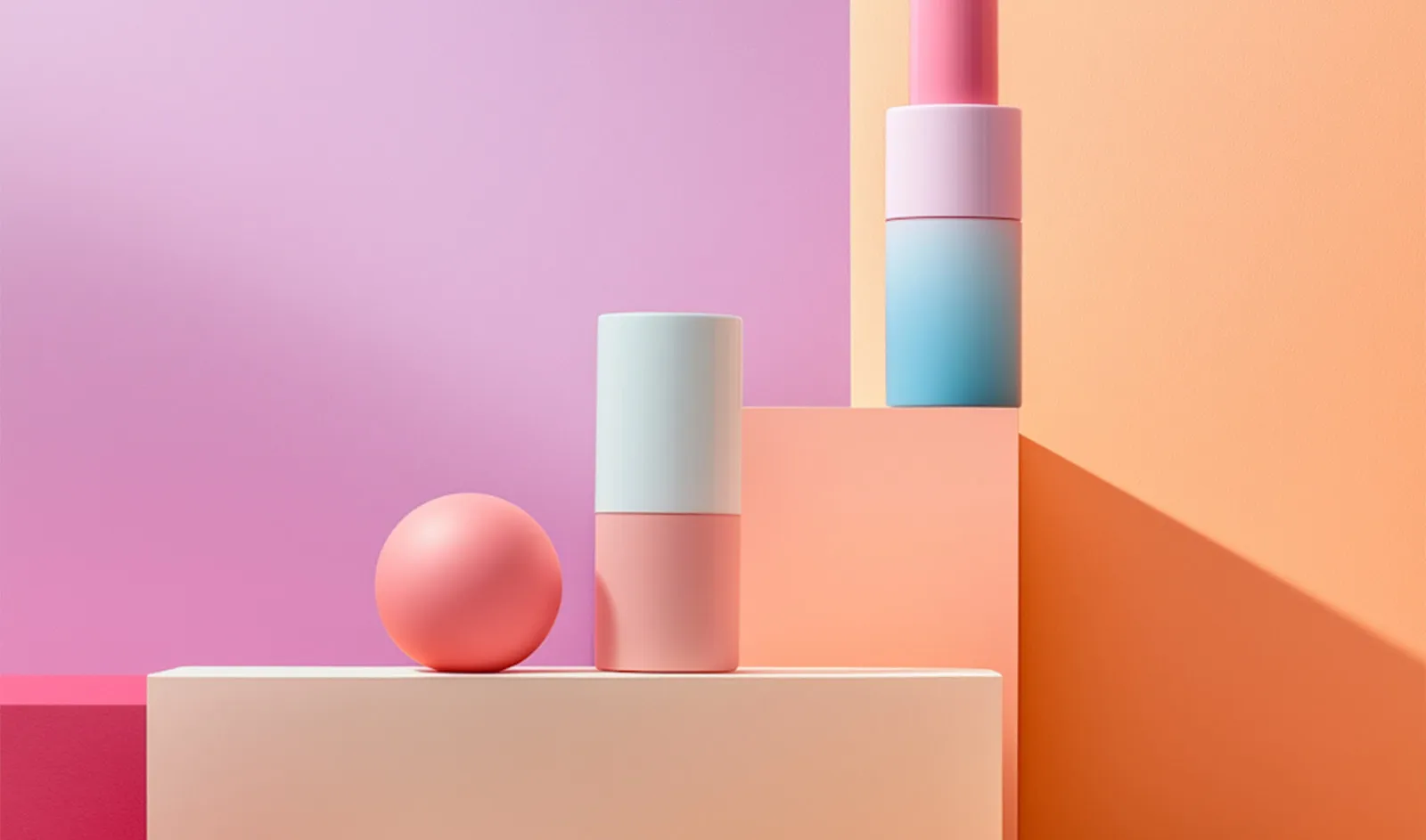
Step 3: Create Your Brand Identity - Name, Logo & Story
After you made a defined your product strategy the next important step is to create a brand identity. This is the brands name, how the brand visually looks (logo, color palette, typeface), and the story that it wants to tell. For entrepreneurs wanting to create a skincare product brand, this is the time to work experienced designers
Choosing A Brand Name That Is Meaningful and Available
The brand name is likely to be the first engagement for a potential customer with the business. Importantly, it is more than just a name, it is a long-term asset that should reflect the brand and has an impact on whether it can be remembered and marketed. A strong brand name should be "distinctive, easy to identify, and communicate your brand identity and product advantages." Important requirements are to help customers remember the name, help it be pronounced more easily, and make the brand related to the category and the values of the brand.
Having creative freedom is only part of the process. One of the most important things about choosing a name for your brand is its availability to be used legally. This includes searching for any conflict in the name desired through a registered trade mark to ensure that no other brand has registered a name that is the same or too similar to avoid confusion, especially within the same trade category. Choosing a name that violates a trade name will result in costly legal fees, rebranding with a brand. Therefore, the process to invent and choose a name must take place alongside the steps to ascertain its legal status, which means this is a two-part strategic choice.

Creating An Attractive Logo and Visual Identity (The Face of Your Brand)
A logo and visual identity (which me include a colour palate, font styles, and style of images) is the "face" of the brand. A dn visually engaging brand identity ad logo can speak volumes, usually conveying instantly the personality of the brand, its positioning (luxury or minimalist or natural or cllinical) and its ability to appeal to the target audience. The logo and colours are part of the broader ar concept of branding, and represent the most recognizable attributes of the business.
In the visually driven beauty industry, visual is everything. Professional and eye-catching visual identity creates trust, value, and credibility. A logo and visual identity that is inconsistent or shows lack of professionalism diminishs the brand, regardless of the quality of the product. Professional graphic design can help to save the brand identity by pulling the essence of the brand and its strategic positioning into an attractive visual language for the intended customer. Differentiating brands within a category requires visual appeal - ultimately consumer choices are influenced by what appeals to them and desire or willingness to engage with and purchase the brand.
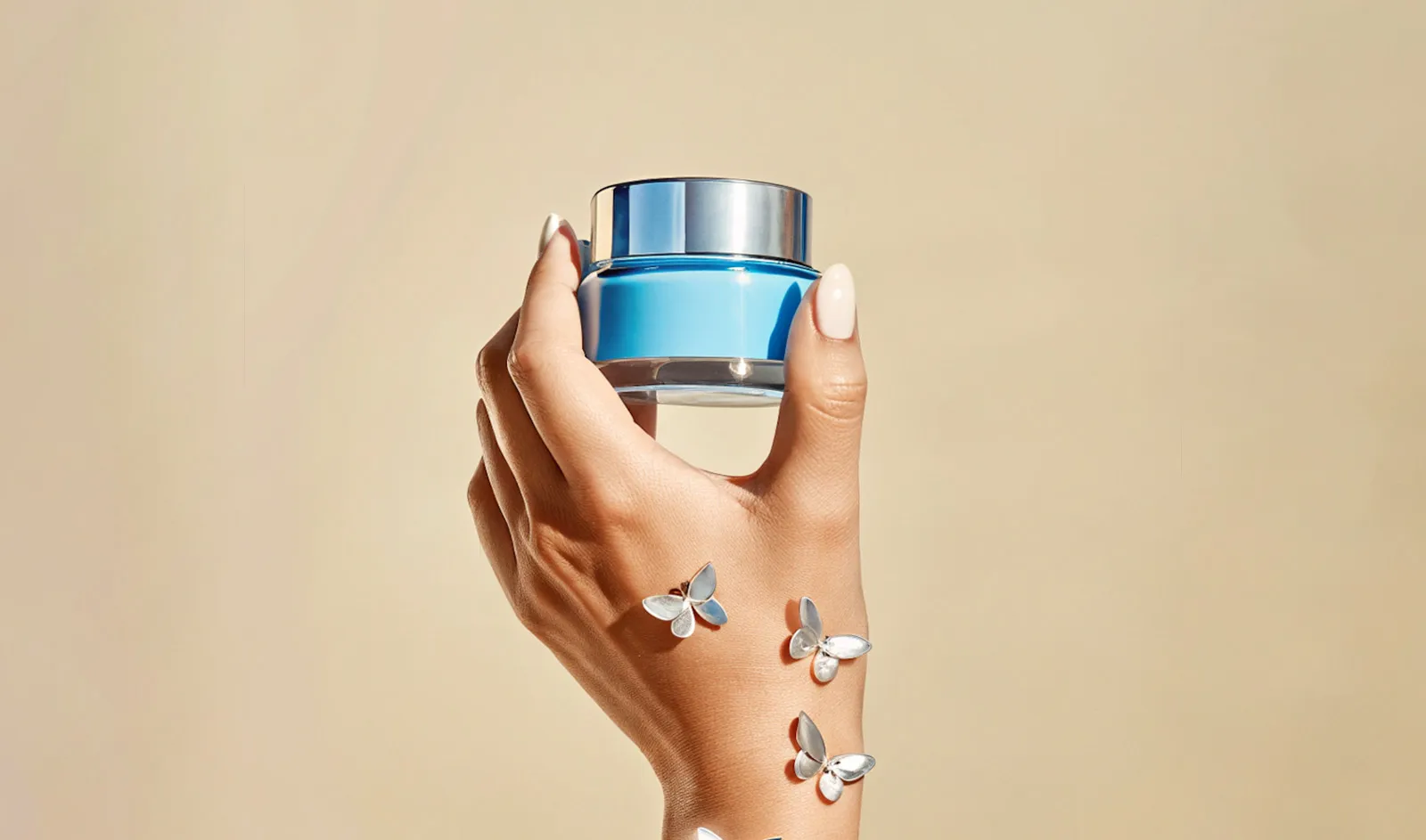
Articulating Your Brand Story and Message (Creating An Emotional Connection)
An effective brand identity must build in strong annual story with consistent message, and evoke emotional connection rather than merely as a combination of identified products. As the audience is unwittingly moved toward from "a collection of products," to particular brand story and personality. The back story often includes the founder's "why" (core motivation and passion) as well as the brand mission, core values, and unique offering to customers. The prospective owner should also share the company's mission, which can be thought of as the basis of the brand story.
The narrative then determines the brand's tone of voice, which is then consistently applied to all forms of communications including website copy, social media posts, product packaging, and customer service communications, all must have brand coherence. All branding text including tag concepts, must be aligned with the target customers and niche. In a marketplace brimming with functional products, a compelling and authentic brand story offer differentiation. Telling such stories allows brands to establish loyalty rather than just transactional relationships.
Consumers, in particular in lifestyle product categories such as skin care, purchase the story (and values) behind the brand and its community, not just the product. Consider the time and thought needed to write this story as an investment that can pay dividends when customers tell others about their positive experiences or loyalty to the brand and contribute to buyer loyalty and advocates, are difficult competitors to replicate features alone.

Step 4: The Application: Creating Your Skincare Business Plan
A business plan is a strategic application for any new business - including a new skin care brand. It is a crucial resource, most importantly it turns your personal vision into a functional application of action, which is an important guide to subsequent decisions, assessing funding options, and determining measures of success.
Why All Skin Care Brands Need a Business Plan- (even a simple one)
The stereotype that business plans only apply to big corporations or companies seeking large amounts of investment is not entirely true. In reality, every potential skin care brand "no matter the size of the skin care line" can find value in creating a business plan. A business plan is an "important [document] to navigate all decisions and content development." Even a small, "one page summary" can be enough to clarify your thinking and vision- especially in the early days of the brand. As an added note, I can tell you that a decent business plan is usually "required if seeking outside funding" if you ever find yourself needing funding.
Key Elements for Your Skin Care Business Plan
An average skin care business plan would go into significant depth for the majority of sections or elements, while all sections would address an important aspect of the business. There can be some variation in the level of detail, but these thematic areas will allow a systematic way of presenting the case for your brand. The plan should include,"the mission and objectives of the company, an overview of the market, the need it will fulfill, and a general marketing strategy." A comprehensive plan would also include "descriptions of products, an initial budget and a mission statement."
Interestingly, several common elements would be included are:
- Market Analysis: Comprehensive target market information including the demographics and psychographics of the ideal customer, market size, industry trends, and a comprehensive analysis of competitors.
- Products & Services: This will be a description of your skincare line, the features and benefits that are unique to your line, your formulation philosophy with respect to products, and any future product development plans.
- Marketing & Sales Strategy: You will need to outline how your brand will be positioned to your target customers, how you will create awareness, convert customers, and grow sales. You will want to include the branding, pricing strategy, distribution channel, and promotional activities.
- Operations Plan: This will include the day-to-day operations of sourcing ingredients, manufacturing (in-house, private label or contract manufacturing), inventory/Kitting, and order fulfillment.
- Management Team: This will include you, your co-founders (if any), and any key team members (if applicable) with relevant experience and expertise.
- Financial Plan: This critical section may include estimates for start-up costs, any funding requests, sales forecasts, estimates P&L, cash flow statements and break-even analysis.
- Appendix: This will include any supporting documentation (resumes, permits, supplier agreements, detailed market research data).
A business plan that articulates all of the above elements means, you have approached the venture from various perspectives, and really considered the holistic business case. This rigorousness demonstrates professionalism and preparedness and will help establish credibility in securing any needed resources and/or support.
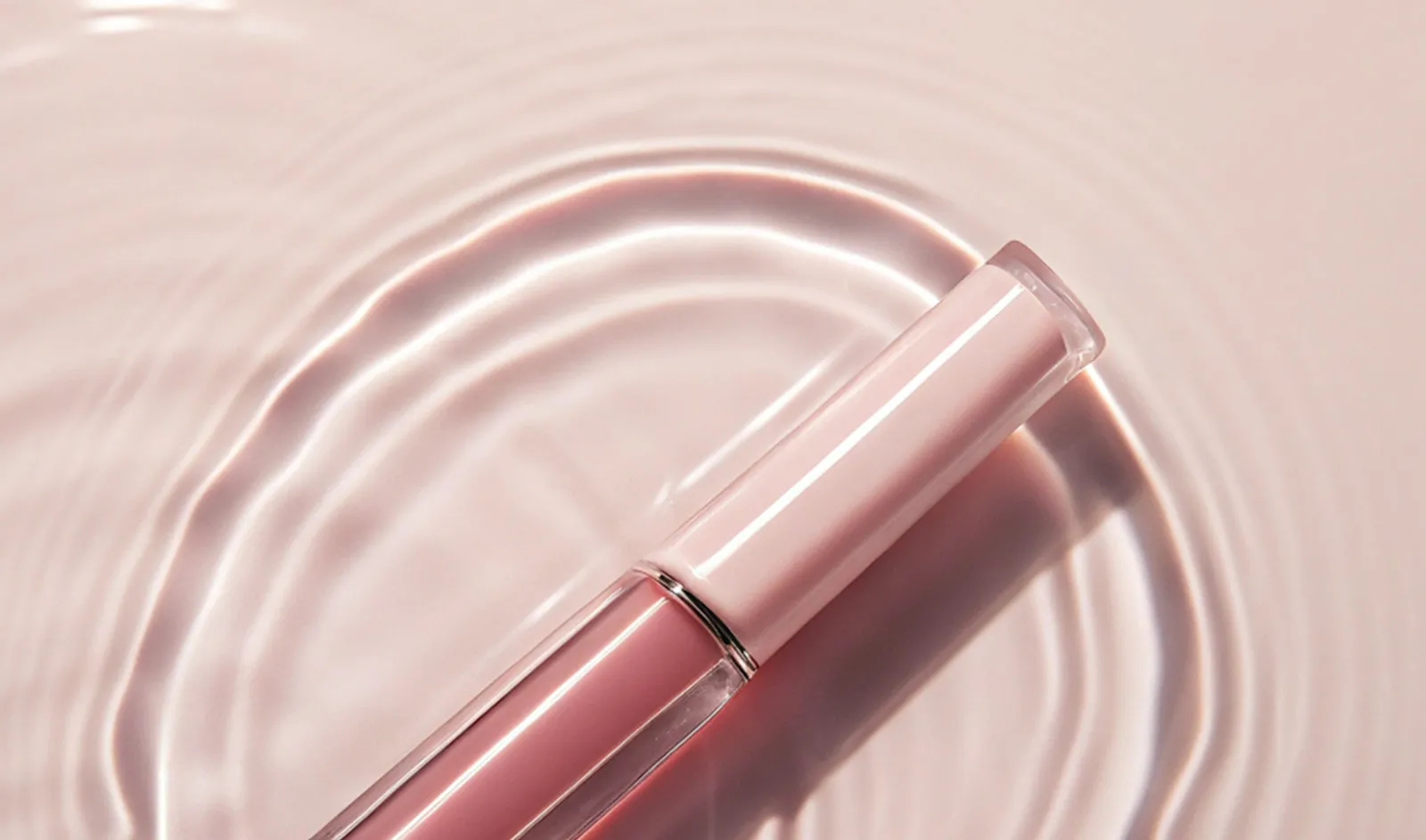
Step 5: Legal Phase: Licensing, Rules and Regulations, and Compliance
Starting your skincare business means that now you will have to deal with legal and regulatory works. While you must be compliant, and meet all regulatory and licensing requirements throughout your business, you need to be especially diligent at the startup of your business because this is the best protection for you, your customers, and your business reputation. In this step, we will discuss business structure, FDA rules and regulations, and permits for which you become a business operator.
Business Structure (Sole Proprietorship; LLC; Corporation)
One of the first legal decisions you will make is to establish a legal organization for your business: sole proprietorship, partnership, Limited Liability Company (LLC), S Corporation, or C Corporation; there are things to consider with each structure upon selection; personal liability, taxation, administrative burden, capital to structure, and time it takes to organize. For example, a sole proprietorship may be the quickest and easiest entity to set up and create, however, it also offers absolutely no personal liability protection so you would be risking personal assets. An LLC or Corporation will require more work and compliance, but they keep business assets and business liability within the same entity which totally separates any potential personal liabilities held by the business owner.
As a business owner, know the legal structure of your business will have financial liabilities and legal exposures that may extend well beyond the startup phase. Choosing an inappropriate legal form of business could lead to additional exposure to financial liabilities for the business owner, in addition to poor tax treatment in time. This is an important decision to make, and for the reasons stated above, it is a good idea for the entrepreneur to "seriously consider formally organizing the business... or a lawyer".

Essential Licenses, Permits & Insurance for Your Skincare Business
Along with federal FDA regulations, skincare businesses must also comply with numerous state and local requirements. Most often, businesses have to check — "state-specific requirements for business licenses and sales tax permits." If businesses have physical locations, and the nature of their business operations are local, there may also be home occupations and zoning licensing issues.
Besides licenses, permits and registrations, choosing proper insurance coverage is also an important risk management strategy... "You may also be justified in seeking professional and product liability insurance." Product liability insurance protects the business from claims of injury and damages from the business’ products. Professional liability insurance (otherwise known as errors and omissions insurance) would apply in circumstances when a brand is providing advice or consultations.
These insurance products, alongside general business liability insurance, are part of an essential safety net for the business to protect against unexpected events, accidents or legal trouble. If businesses ignore operational legalities and insurance needs they are risking huge financial and reputation risk, perhaps as significant as violating FDA regulations. The business really needs to take a holistic view to legal and risk management to provide sustainable peace of mind for the long term.
Step 6: Activities: From Idea to Implementation: Manufacturing Your Skincare Line
Now you have a product idea; you are getting your brand's identity in place, and the legal structure is being established; the logical next step is to figuring out how the skincare line will actually be manufactured. This is where the product actually gets made, and the manufacturing pathway you choose will impact the brand.
Manufacturing Pathways: Exploring your Options
There are a few primary pathways for the manufacturing of skincare products, and each has its own pros and cons. The pathway you choose for manufacturing here is strategic in nature and will have an impact on the brand's differentiation strategy, manufacturing cost required to get started, speed to market, and operational complexity. This is not just a logistics step; this is a business model choice that needs to align with the brand's plan/resources.
Manufacturing products in its own facility (DIY or LAB):
There is a defined model that allows the brand to take responsibility for the entire manufacturing process, from raw materials that go into the product to the finished product.
Pros: The biggest advantage to choosing this pathway is complete control of formulations, quality, and timing of production. This type of model can be reasonable for very small, initial batches or for founders that are very capable formulators and have access to suitable, production level facilities.
Cons: It is only "generally available to larger companies with financial backing due to very high, ongoing, operational costs" and are likely not scalable for most small start-ups; it also requires serious consideration of regulatory compliance for the manufacturing facility (Good Manufacturing Practices - GMP); and the ongoing operational expenses are prohibitively expense for most small and startup companies.
Private Label:
This is often referred to as the "backbone of the skincare industry" for new businesses in the market. Private label means choosing from a variety of existing lab-tested formulas that are offered by the manufacturer and then branding those formulas with their label and marketing.
Pros: It is "generally the cheapest and easiest way to get into the market, especially as a new brand," allowing them to get "to market fast" with their products. The minimum order quantities (MOQs) are frequently lower than custom formulations, which reduces their initial investment. Some private label manufacturers even offer to "add special ingredients and fragrances" to their existing base formula, which provides them with some customization.
Cons: The main drawback is there will be less product differentiation because their core formulas will not be unique to their brand. The brand will also be relying on the quality and innovation of the manufacturer’s formula.
Custom Formula (Contract Manufacturing):
This option is creating a unique skincare formula from scratch with a specialized lab or contract manufacturer. Custom formulation allows brands to create a new formula that matches their vision and the needs of their targeted consumer.
Pros: Contract manufacturing allows for the creation of a "unique product line", and offers the most differentiation and potential innovation. The brand owns their formula (depending on their agreement), providing them with the largest competitive advantage.
Cons: Custom formulation "comes at a higher cost," also, custom formulation usually takes longer to develop because of research, formulation, testing, and stability testing. Additionally, the MOQs may be higher than the private label option. The selection of one method or the other depends on the brand's USP, available finances, the risk it is willing to take, and the speed to market. If there is a discrepancy, it can create serious operational issues or not allow the brand to fulfill its brand promise.
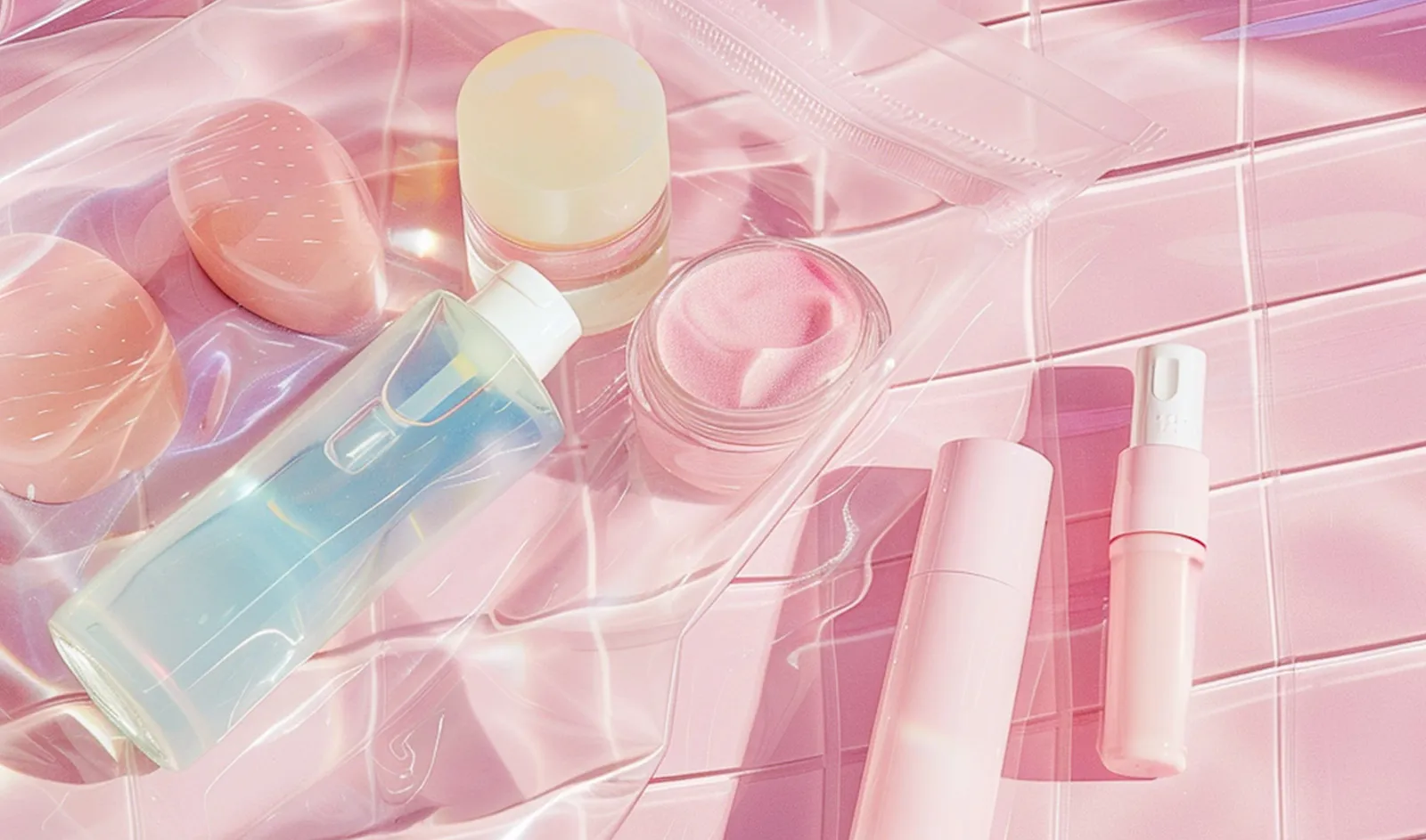
How to Find a Trustworthy Skincare Manufacturer
Whether opting for private label or custom formulation, selecting the right manufacturing partner is very important. This is similar to selecting a business partner, as company you choose will reflect the responsibility for quality standards, reliability and ethical considerations which all directly relate to the brand and also impact product consistency and customer trust.
You can find potential manufacturers via industry directories, trade shows, online, or through referrals by industry contacts. When you have identified outdoor potential partners, you will need to undertake a thorough vetting of each potential manufacturer. Here are some things you will need to consider:
Experience in Niche:
You will want to look for manufacturers that have experience in the type of product or niche that is being targeted by the brand (i.e. organic skincare, medical grade, etc.)
Follow Regulatory Guidelines:
Above all, you want to ensure that your potential manufacturer follows FDA regulations and all Good Manufacturing Practices (GMP). If the manufacturer has a GMP certification this is a strong indication of their commitment to product quality and safety. ISO details may also be considered.
Quality Control Practice:
You will want to ask detail questions about quality checkpoints that they have during the "point of origin" for raw materials through the "batch testing methods" of the finished product.
Track Record and Reputation:
Investigate the manufacturer's history, read customer reviews, testimonials, and ask for references.
Transparency and Communication:
Look at their communication practices, response times, and feedback mechanisms. A solid partner who responds and is prepared to tell you about their challenges is a tremendous asset.You will want to look for manufacturers that have experience in the type of product or niche that is being targeted by the brand (i.e. organic skincare, medical grade, etc.)
Capabilities:
Verify they can handle the quantities you expect, and whether they provide variables beyond your "branded product" such as "customizable packaging and labeling options" to help optimize processes.
On-Site Audit:
If you have the ability, "go ahead and do an on-site audit" to see their production line, meet the quality control team, and understand their workflow. The first-hand access could play a vital role in the selection process.
The selection process should be complete due diligence, focused on a partner that can meet the brand's quality expectations and long-term growth ambitions as opposed to simply getting the lowest price.

Step 7: Setting Your Prices: Strategy & Profitability
Pricing the right products in skincare is a critical decision as it affects profitability directly, and the impression or perception of the brand and competitive position in the market. There is a delicate equilibrium for pricing, so that you cover all costs, represent your brand's value, and present an enticing offer to your targeted customers.
Factors Affecting Your Skincare Pricing Strategy
There are numerous interdependent and interrelated factors associated with setting your pricing strategy. Price is more than a mere mark-up on cost; it is a signal of brand value and market position when pricing a product. Price it too low, and you can have an erosion of brand equity - creating questions about the quality of the product or value proposition. Price it too high, and you may have no target audience, even if your product is spectacular!
The next factors are important to consider:
Cost of Goods Sold (COGS): Generally is the direct costs of producing the products unit. COGS includes the raw stage ingredients, component packaging parts, and manufacturing fees.
Indirect Operating expenses: operational overhead includes the indirect costs of running the business: rent (if applicable), utilities, staff costs (salary), software operating license and subscription fees, and other administrative costs that you must determine how the fee will be priced, to remain profitable.
Cost of Marketing and Distribution: Marketing-related costs, inclusive of getting the products to the customer (advertising, influencer marketing, shipping, and, if selling wholesale, retailer margins) as well as marketing-related costs must be considered.
Perceived Brand Value and Positioning: The brand should determine what position it wants to occupy in the marketplace (an accessible, mass-market alternative, a mid-tier "masstige" brand, or a premium luxury line), as the price should correspondingly reflect that positioning along with the value customers believe they are getting as compared to other offerings in the marketplace. Niche positioning will be different ("eco-friendly" or "luxury skincare with expensive ingredients") and will be particularly influential in terms of perceived value and acceptable pricing and price perceptions.
Competitor Pricing: Look at the price of competing products in same niche provides reference point, but pricing not only needs to consider competitor actions, but also the unique features of your brand.
Your Target Audience's Willingness to Pay: As mentioned in Step 1, a deep understanding of the ideal customer (which includes their ability to purchase) extends to their willingness to spend money on skincare products that meet their individual needs and values. Therefore, pricing should be neither too low or too high (i.e. attractive to your target audience and not too high to price yourself) in relation to your target audience and consumers.
Profit Margin Targets: Your storefront has a profit margin you want to achieve per product for a viable business model, and sustainable financial growth that affords reinvestment. At the end of the day, the pricing approach must intentionally manage a fine balance between its internal cost structure, external market conditions, and brand value perceptions. It’s an important lever in defining the brand’s place in the marketplace.

Pricing Models in Skincare (e.g., Keystone,Value Based)
While the considerations above set context, a variety of pricing models provide outlines for the thoughtful, systematic consideration of these factors. Understanding these models give you a more structured way to think about pricing than just throwing a random markup on your COGS.
Cost-Plus Pricing: Cost-plus pricing is calculating the total Cost of Goods Sold (COGS) for a product, then applying a predetermined markup percentage to determine the price at which the product will be sold. It is the most simple pricing method, however, it may not capture the full perceived value of the product or factors around the market.
Keystone Pricing: A pricing strategy commonly used at retail in which the selling price is double the wholesale price (100% markup). It is simple, but not always suitable for every product or brand position, especially in direct to customer models.
Value-Based Pricing: A pricing model that price products based primarily on the value of the problem solved for the customer (rather than on cost). This model requires appropriate understanding of the customer, including what problem the product offers a solutions for and how the customer perceives the value of the benefits provided. This models is directly related to the audience research insights gleaned earlier with respect to customer's problems and desires.
Competitive Pricing: Pricing your product in relation to what competition is charging for similar products. This model can be used to positon your brand as cheaper equal to or more expensive than the competition.
Premium Pricing: Used for luxury highly differentiated products: the theory behind premium pricing is to communicate exclusivity, high quality or unique benefits just by virtue of the price point being higher than the competition.
Typically, a hybrid approach using a combination of pricing models is most effective. For example, a brand could begin with a cost-plus method for its products to ensure there is a profit margin, then move to the perceived value and competitive price positioning of the product. The introduction of these models helps to elevate the discussion from a simple calculation of the price at which to sell, to a strategic financial management decision that empowers founders to make more educated pricing decisions that meet their overall business objectives, either to grow quickly into a market, or to maximize premium profit margins.
Step 8: Launching & Marketing Your Skincare Brand
With your products developed, your brand identity settled and your pricing is ready; the next exciting step will be launching the skincare brand to the world. An effective launch and marketing strategy is critical to creating awareness, converting customers and making your first sales.
Your Online Presence - The Necessary Website & E-commerce Platform:
In digital-first marketplace, a professional and user-friendly website developed with a live e-commerce solution is no longer optional, it is "necessary". For most new direct-to-consumer skincare brands, the website will be the primary storefront, the main hub for the brand narrative, and the most important place for customers to engage with the brand for credibility. Since sales channels will probably include "own website", you will want to add that to your "channel strategy" so there is no confusion.
Key features to ensure your online presence is effective are:
Key features to ensure your online presence is effective are:
- High Quality Product Photography: Images must be perfectly sharp, clear, and professional which accurately and compellingly showcase the product.
- Product Copy: Products should be described informative and persuasive way that address the benefits, key ingredients, application instructions and tone of voice for brand.
- Easy Navigation Structure: Customer should able to find what they need and browse through several products and execute their purchase with a minimal help. Responsive Design: The site should be responsive to function and be displayed correctly on all digital devices.
- Secure Checkout: The site will use a trusted credit card processor or payment gateway (for customer protection), it should be secure and provide customers with the ability to enjoy clean and easy checkout transactions.
- Brand Story: You should have different sections for your brand story that speaks to your brand mission, brand values and brand promise where you identify your brand's primary unique selling proposition.
If your website is poorly designed or impossible to navigate, you are risking losing customers and missing sales opportunities even when those products are really nice and well-made. This is one more area where professional graphic and web design capabilities can really make a difference in conversion rates and perceptions of your overall brand, highlighting the value of the blog writer (and former graphic designer) for your customers.
Content is Queen: Blogging and SEO for Skincare Brands
Creating valuable, informative and engaging content is a great long-term strategy for creating organic traffic, educating consumers, establishing brand authority, and ultimately generating sales. This is where we can talk about using "content marketing" "to build buzz and educate potential consumers." A well-managed blog (on the brand's website) with articles about skincare tips; utilizing ingredient spotlight articles; talking about common skin problems and their solutions; and introducing people to the ethos of the brand is capable of accomplishing so many things.
By using content optimized for appropriate keywords (found through keyword research for skincare-related content) the brand can improve its rankings (SEO). Users who want more information in relation to their sets of circumstances will self-select into the brand. This educational approach creates the perception that the brand is an expert and trusted source to develop more familiarity for prospective customers. After some time, good SEO and an ongoing pipeline of consistent qualified content provides a significant competitive advantage making it invariably easy, and less costly option, to generate a qualified lead and sale in the long-run, without having to continuously spend money selling it’s products. This guide will provide one example of useful content.
Using Social Media Marketing & Influencer Collaborations
Social media is the lifeblood of the beauty space, not just as an advertising channel, but also as a major player in both customer engagement and as a community forum to curate, share, and engage in trending topics. With regards to having a successful social strategy, your first step is to find where your target customers are spending their time online (Instagram, TikTok, Pinterest, Facebook etc.). A fully formed social media marketing program will focus on: aspirational, quality written copy with impactful visuals (photography, video, and behind-the-scenes); using user-generated content (UGC) to create social proof; and engaging with the audience through responding comments / direct messaging from the brand’s followers. Along with social media, the broader influencer umbrella can be a powerful channel to engage a broader, but hobby niche audience.
Partnerships with influencers can be low-key continental micro-influencers with small niche focused followings or macro-influencers with millions of followers. With that being said a strong partnership would relate to a brand connecting with influencers with whom their values, aesthetic, and audiences aligned supportively. For beauty brands with influencer roots it is mostly leveraging that "social media following to drive" traffic to the direct-to-consumer's product pages, with visits coming from "giveaways and promotions" to acknowledge an invested audience and produce website traffic. The intention is to a strong social strategy; either you build off of a niche or you create a new path; regardless, you want to make authentic connections and work with authentic voices.
Email Marketing: Build Loyalty & Repeat Customer Sales
Indeed social media is a valuable resource for awareness and engagement - however email marketing is more direct ownership that connects you to people who already demonstrated their own interest in that brand. Having your own email list, whether it was built through website opt-in page, promotions from influencer collaborations or through some type of content download will always provide you as a marketer with a marketing asset - especially ecommerce one, direct to consumer skincare brands need to consider for their brand. Email should not be neglected or ignored as a piece of a strategic plan.
Marketing campaigns can take on a variety of roles:
Welcome Series: As a new subscriber, welcome them, explain your story and offer a first time incentive.
Email Newsletter: Provide skincare tips, company updates or announcements, curate content of the company and link back to it, and announce a new product launch.
Personalized Recommendations: Email custom curated content, from brands, based on past purchasing behavior or provide suggestions based on the length of time spent on product pages.
Unlike social media, with email newsletter content, you have an audience who opted-in to hear from you instead of being restrained by an algorithmic process to communicate and deliver your content. Email represents an individual level of communication to send segments and tailored messages and leads to nurturing accounts with the eventual goal of conversions and long-term loyal consumers.
Soft Launch vs. Full Launch
When brands roll out products into the marketplace, they have options in how they launch or approach the marketplace. There’s a “soft” launch approach where the brand first introduces the product to a limited range/audience or capacity, etc. This allows the brand to “test the market and receive feedback” at the onset of a broader roll out. In many ways, a soft launch is a real-world test to validate product function, success of quality, packaging, marketing messaging, and operational processes for fulfilling an order and providing customer service.
There are positives with a soft launch as it’s an opportunity to work out any questions or issues and also improve the offering and potential buzz and testimonials when working through initial customer perceptions of the product. It is a strategy that allows for risk mitigation to validate with real-world sales and make any necessary improvement and refinements before putting money into a launch that may be less about learning. A soft-launch acts as pilot in a way that allows the brand to build a “proof of concept with limited quantities of products” before seeking any additional partnerships, or investment, which may be necessary for a more sustained scale launch.
Sales Channels: E-commerce, Retail, Pop-ups and More
While a brand's e-commerce website is usually the primary sales channel (especially at Launch), (or the only) brand’s sales channel for that specific product launch to reach new customers, running various sales channels can result in more reach and visibility through providing different consumer access points. When exploring all the possible ways to “sell your products,” the brand may want to think about sales channels aside from the direct sales format of the brand’s online platform. Some sales channels may include:
Large Online Retailers
Many people consider Amazon, etc., as being influential and help get you exposure. However, may get lower margin and possible “less control over their brand.”Specialty Beauty Shops & Boutique Stores - Selling in curated retail places that align with the brand identity can confer prestige on the product and reach customers that prefer to shop in person.
Spas and Salons
If the products are intended for professional use or recommendation to consumers, spas and salons may be additional channels.
Beauty Subscription Boxes
Having a product in beauty boxes could provide exposure to a large and captive audience of product discoverers.
Pop-up Shops
If a brand desires to create buzz, get direct customer feedback, and/or assess the potential feasibility of physical retail, pop up shops can allow a brand to have their own short-term retail gig without having to commit long term.
Having a mix of sale channels can be helpful for growth, but it also adds a complexity of logistics with shipping and inventory, margin negotiation, and ensuring consistent messaging and representation of the brand in physical retail spaces. The selection and strategy of sale channel should consider how the target customers shop, the scale of the brand and how well the brand can leverage multiple distribution channels at the same time.
Step 9: Growing Your Skincare Brand
Starting a skincare brand is a huge accomplishment. However remember that the goal is just the beginning the start of your journey. Long term success means you will need to continue to commit to ongoing improvement, scaling and engaging with customer and the market continuously.
The Value of Feedback from Customers: Listen, Learn, Iteration
After products are given to consumers or customers, the feedback they provide is a priceless resource. By listening and collecting reviews, survey data, social content, and questions, they provide invaluable information about what is happening in the brand to make it great and where things can potentially be improved. This is really about what the brand can do with the feedback, which is to "improve your offerings" and improve upon the overall brand experience.
When you listen to customers, it shows you care about their opinion and you understand part of your role is to meet their needs based on their review. This listening and learning process, has the potential to improve what you provide your customers and how you provide customer service. It can also show opportunities to meet needs that consumers may have that you were not aware of, which could lead to a created product or service. If a brand builds solid feedback gathering and acting protocols, then they can build a loyal customer base, promote brand evolution, and have tenacity to respond to changing markets.
With this kind of responsive customer engagement, the appeal of "repeat customers," usually tied to quality and satisfaction, is really part of the synergy.
Scaling Production and Operations (A Balanced Approach to Growth)
As the brand gains traction and demand grows, managing growth is a challenge and an opportunity. Growth that is not planned can cause stock-outs, quality of the product to decline, shipping delays and overwhelm the customer service aspect and destroy the hard earned reputation of a brand. So "scaling responsibly" should be the by-word. When considering how to manage growth, consider:
Manufacturing Capacity
Does the selected manufacturer (or in-house) have the capacity for blasting the growing production volume without compromising quality or lead time? This may include "choosing the Right Manufacturing Partner", with future growth in mind.
Managing Supply Chain
Mastering Supply Chain Efficiencies -checking every link in the chain to see where efficiencies can be made: is it possible to always use local-ish suppliers, to save costs and lead time, or find a more sustainable packaging option?
Stock and Inventory Control
Plan for stock and inventory systems perhaps using forecasting and inventory management systems or software that use AI, to predict the market or market trends to ensure that the target stock level of each product is maintained or reduced; and avoiding under-stocking and over-stocking.
Team Capacity Management
When to bring in team members to help manage the increased workload of things like: customer service, marketing, or operations.
By proactively thinking through how best to scale, and potentially invest in systems, partners, and members of the team, you are positioned to take great care of the product, customers, and operations paths of the business as it scales.
Thinking About New Products - Explore New Product Development and Extending Your Product Line
After developing a product line and engaging with a customer base, and an established product line, the brand can begin to think about extending its full line of offerings in a strategic manner. The original advice to "leave limited options initially, so you can perfect your product before expanding your offering" implies that you are expanding only as a "later stage" consideration. Any new product development should be driven by customer feedback, gaps in the current brand niche marketplace that the brand can fill, emergent trends that are aligned with the brand's genre or philosophy, and ultimately, the brand strategy.
It is important that the brand does not dilute, or lose its core identity or core message, by chasing every trend or going too far from their core expertise. Each new product better reinforce the brand's USP, meet an important customer need for our target audience, and be of the same high quality as our current line. Product extension strategies that deepen our relation with our existing customer base or that attract the same types of customers, always reinforces the core promise of the brand, which adds to the sustainability of growth.

Frequently Asked Questions (FAQ)
Your Skincare Startup Queries Answered!
Starting a skincare line often comes with many questions. This FAQ covers some of the more common questions that new entrepreneurs ask.
How much does it cost to start a skincare line?
In all honesty, the actual cost to start a skincare line can vary drastically just based on many variables. There isn’t just one answer to this question, but it’s important to set realistic expectations about the "Startup costs" involved. The variations to consider include which route you choose to manufacture through (as the start-up costs of DIY on a small scale will be different than SI being customized with a lab), the number of initial products and their level of complexity, what packaging you use, what budget you want to commit to branding and website design, and legal and registration costs, MOQs from the manufacturer, and to determine what your initial marketing and advertising budget will be.
The aspiring founder should have a look back at the financial planning section of their business plan to break down a detailed budget. Costs can range from a few thousand dollars for a really small scale home-based operation (with limitations as mentioned below) to tens of thousands and even hundreds of thousands of dollars for a more sophisticated launch with customized formulas and thorough marketing. Listing out all potential cost categories—such as research and development, formulation, ingredient sourcing, packaging, branding and design, legal, initial inventory, website set up, and marketing launch campaign—will assist in the process of developing a more accurate projection for how much you should expect to spend within this category.
Can I manufacture skincare products in my own home to sell legally and safely?
Many skincare entrepreneurs will start off by formulating their own products in their kitchens; however, selling these "homemade" products as commercial products raises significant legal, safety, and scalability issues. While "Manufacture the Products In-House" affords the owner direct control, this is often better suited to a larger company who has the resources to dedicate a compliant facility. Good Manufacturing Practices (GMP), which are standards for ensuring products are consistently produced and controlled according to quality standards, are difficult to adhere to and maintain for home-based production intended for commercial sale. GMP is something to consider carefully during a vetting process with larger manufacturers indicating to you the manner of professionalism and safety you can expect.
The FDA mandates that cosmetics marketed and sold in the United States must be safe for use by the public while under labeled or customary conditions of use and must also be labeled properly—in all cases, it does not matter where the product is manufactured. Products manufactured from a place that is not properly sanitized or controlled, can create the potential for contamination, instability, and harm to the consumer. And, lastly, there are liability considerations if a person happens to have an adverse reaction to your homemade product.
The final hurdle is scalability; making your own products from home, builds tremendous inconsistencies as you will not be able to produce any consistent large quantity of the same batch from your home kitchen. However, while making your products from your home in your own kitchen can be a viable means of production to test for personal use or for some very initial recipe testing (not meant for broad commercial sale), you will ideally want, at one point, to transition to commercial sale, meaning that rather quickly you will need to comply with regulations, licensing, and procedures for selling skincare products typically, your best methods of doing this is finding a compliant manufacturing facility to partner with or purchase your own dedicated lab space and equipment to ensure quality and product safety, product consistency, and compliance with regulations.
How long does it take to develop a skincare product?
The timeline for developing a skincare product can vary vastly. Factors affecting the development time include:
Formulation Scope: A simple product based on known science or a private label formula will take less time to develop when compared to a truly new, custom formulation that utilizes unique or novel ingredients or delivery systems.
Ingredient Sourcing Timeline: If sourcing rare and exotic ingredients, this could significantly delay the planned timeline.
Testing Timeline: A lengthy protocol of multiple tests including, stability, safety, and efficacy is sure to lengthen the timeline. Stability testing alone generally takes, at a minimum, 3-6 months under various conditions.
Regulatory Approvals (if necessary): Most cosmetics do not require any FDA pre-market approval, however, products that provide drug-like claims (i.e.: treat, cure, prevent acne or eczema) may have longer regulation approval processes.
Manufacturer Lead Times: The queue of development will vary, producer to producer, primarily being affected by the production schedule and when your product would be able to be scaled up to manufacturing.
Revisions and Refinements: The fascinating and rewarding, but time-consuming, process of feedback, and revisions of the product (tasting, testing, reformulating) can lengthen the time to delivery.
If we were to think of a custom formulated product being ready to manufacture, reasonably, from an initial creative concept, could be later in the time frame of 6-18 months, considering the R&D, and testing, and revising timeline. Private label products tend to have quicker time to market; from the time you settle on a product to the time you can launch a new line of skincare products (typically a couple months).
What are some of the MOST dangerous mistakes to avoid while you start to build a skincare line?
While every entrepreneur’s journey is uniquely different from each other, there are definitely mistakes that can likely lead entrepreneurs down the path of common pitfalls of a new skincare brand launch:
Lack of Market Research
Launching products lines without a full understanding of whom your consumer is, what they need and what other competing brands are doing in the skincare market.
Not Unique USP
You should have a unique selling proposition that makes your brand different when entering into an already crowded and competitive skincare market!
Understating Expenses and Overspending
Plan badly and you can be subjected to cash flow issues that can stall your ability to gain traction on your brand.
Too Much Cost Cutting on Quality or Safety
Cost cutting to save on product formula pricing, ingredient quality, testing, and so forth is going to lead to problems, and possibly legalities!
Forgetting Legal and Regulatory Items
Educating yourself on compliance of regulations is crucial, whether it’s a matter of complying with FDA regulations, labelling requirements, business licensing and permits, etc..., or easily incur fines or be forced to shut down.
Poor Branding and marketing
Poor messaging, low-quality images, and lack of reach can lead to just a simple failure to communicate with and connect with your audience.
Poor Customer service
Failing to respond to customer concern and comments is negative reinforcement, and is a fast-track way to dissapoint customers and generate negative word of mouth.
Trying to Do Everything at Once
Too much product too soon, or too many distribution channels under circumstances where you may have neither the means or focus. Not Sticking It Out: As we've established, the developing an idea for a brand and new products for sale will certainly be a challenging task and only a few will have the perseverance through the challenges that will come at the outset, eventual success comes after "getting through the muck".
By proactively avoiding these errors, through preparation, due diligence through the process, and the commitment to quality we will have taken steps to increase the likelihood of building a successful, and sustainable skincare brand.
Launching and growing a successful skincare brand is complicated and requires a combination of passion, creativity, planning and most importantly, commitment. This guide has taken you through the essential topics, from doing the hard work of a self-assessment along with understanding the market, niche, the development of products and building a brand identity, and business practices including planning, legal issues, manufacturing, pricing, and of course marketing and sustainable growth.
In all of the steps, whether it was defining a unique selling proposition, product safety and efficacy, designing a brand story, or scaling, every step was important in the overall success of the business. The skincare market continues to change which provides opportunity for new innovative, and authentic brands to connect to consumers and to have an impact.
The first step in a journey starts with the first step. Leaving you aspiring entrepreneurs now in a place to turn that dream and vision into a reality. We have shared a lot and hope that you can take the information presented here and develop a great foundation. And, when you're ready to take that even further with a visual identity that will be a true piece of art and magnificently connect you to your intended audience, branding and design professionals are an absolute necessity. A great holistic visual identity and compelling story, have been proven countless times, will elevate even the newest skincare line to a place that will distinguish themselves from the marketplace to help them achieve success. Dream significantly!
Works cited
How to Start a Skincare Line in 11 Steps - 2025 - MasterClass, accessed June 10, 2025, https://www.masterclass.com/articles/how-to-start-a-skincare-line
Your Trusted Skin Care Manufacturer - Metro Private Label, accessed June 10, 2025, https://www.metroprivatelabel.com/private-label-skin-care/
How to Build a Private Label Skincare Line - Trilogy Labs, accessed June 10, 2025, https://trilogylaboratories.com/the-beauty-influencers-guide-to-creating-a-skincare-line/
The Ultimate Guide to Starting a Skincare Brand - Starteazy, accessed June 10, 2025, https://starteazy.in/blog/the-ultimate-guide-to-starting-a-skincare-brand
Please be aware that the information in this article is for informational purposes only and does not constitute professional legal, financial, or scientific advice; the author is not liable for any actions taken based on this content.
















